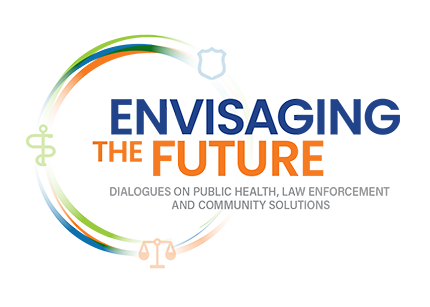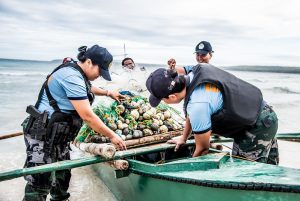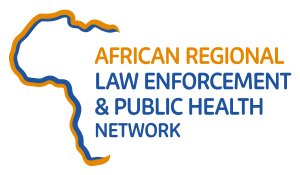
The Fourth International Conference on Law Enforcement and Public Health (LEPH2018)
Date: 21 to 24 October 2018
Location: Toronto, Canada
Download: Conference Handbook & Program
Sunday 21 October
1.00 – 2.00 pm
LEPH Education Special Interest Group (SIG)
Common Room, Hart House, University of Toronto
An open meeting to form a LEPH Education Special Interest Group of the Global LEPH Association – please join us if you are involved/interested in educational strategies, CPD and programs in the Law Enforcement and Public Health field. This SIG is for students and practitioners from any sector or discipline. For more information, please contact Inga Heyman i.heyman@napier.ac.uk
2.00 – 3.00 p.m.
GLOBAL LAW ENFORCEMENT AND PUBLIC HEALTH ASSOCIATION
Common Room, Hart House, University of Toronto
Annual General Meeting

Includes election of Board of Directors
3.00 – 3.45 p.m.
Common Room, Hart House, University of Toronto
Roundtable for organisations working intersectorally between public health, community safety, law enforcement and criminal justice.
A growing number of organisations globally are working in the Law Enforcement and Public Health space, or similar, approaching the issues from different but complementary perspectives. This Roundtable will bring these organisations together to share news about their activities and progress, and hopefully to establish ongoing connections to help co-ordinate and collaborate into the future.
4.00 – 6.00 p.m
Welcome Reception
Great Hall of Hart House at the University of Toronto
Don’t miss this informal event to be held in the magnificent Great Hall of Hart House at the University of Toronto. Register for the reception when you register for the LEPH2018 Conference.
Monday 22 October
| DAILY THEMES: | |
| 8:30-10:00am | PLENARY SESSION P1 LOCATION: Ballroom East and Center |
CHAIR:
SPEAKERS:
|
| 10.00-10.30am | MORNING TEA |
| 10:30-11:55am | MAJOR SESSIONS |
| M1 | M2 | M3 |
| The Crisis Intervention Team Model: What we have learned after 30 years
The Crisis Intervention Team (CIT) model was developed 30 years ago in Memphis, Tennessee. There is now a growing body of research evidence on it’s effectiveness. However, there remains some confusion about the model. This session will discuss the core elements of the CIT model and what is meant by “more than just training.” Community collaboration, a responsive mental health system and the specialized CIT officer role will be covered. |
Public health and policing in England: an opportunity to improve health through Partnership
Working in partnership is essential if we are to address the ‘causes of the causes’ which lead people into contact with the police. This session will discuss work in England to develop and implement a national consensus agreement between policing and health partners; and present an example of a multi-agency offender diversion scheme.
|
‘Hidden in Plain Sight’: medical and behavioural conditions affecting communication with police
Health and criminal justice systems frequently encounter people experiencing communication difficulties. Understanding the health/police intersect in support of people experiencing communication problems has become critical in the provision of timely and appropriately risk assessment and safeguarding interventions.
|
| LOCATION: Ballroom East | LOCATION: Ballroom Center | LOCATION: Giovanni |
| CHAIR: Tom VonHemert CIT International, USA |
CHAIR: Eamonn O’Moore, WHO UK Collaborating Centre for Health in Prisons |
CHAIR and DISCUSSANT: Joanne MacIsaac, Affected Families and Police Homicide, Canada |
SPEAKERS:
|
SPEAKERS:
|
SPEAKERS:
|
| 10.30-6.00pm | POSTERS |
| Reza Novalino, Karitas Sani Madani, Indonesia Prevention and treatment of HIV AIDS and drugs against people with substance abuse disorders |
|
| Christopher Baguma, Ugandan Harm Reduction Network A documentary changing the attitude and perception of law enforcement officers, policy makers and community leaders on issues of drug users in Uganda |
|
| Christopher Baguma, Ugandan Harm Reduction Network Case management of drug users in police custody as a harm reduction approach |
|
| Stella Nalukwago Settumba, University of New South Wales, Australia What type of treatment program for impulsive violent offenders will encourage societal support and increase offender uptake? |
|
| Thomas Ndeogo,Ghana Police Service Enhancing harm reduction among key populations: the police as agents |
|
| Leah Dunbar, Michael Garron Hospital, Canada. Investment in MCIT yields enhanced support for persons in crisis |
|
| 12.05-1.30pm | MAJOR SESSIONS |
| M4 | M5 | M6 |
| The evolution of pre-arrest pathways for vulnerable populations
Global initiatives across the fields of policing and public health are forging new pathways to treatment and social support for people following police encounters with vulnerable populations. An increased focus on police encounters when neither arrest nor hospital transportation, nor taking no action serve as appropriate pathways to enhanced public health and public safety. The panel will examine theoretical, empirical and policy foundations of such initiatives, with a focus on the US. |
Epidemiological Criminology as an emerging paradigm
Epidemiological Criminology is an emerging paradigm, model, theory, and discipline for a new type of interdisciplinary scientist, practitioner, and student. Epidemiological Criminology can serve as an emerging theory for the study of gangs, substance abuse, and law enforcement, among other issues.
|
Rethinking the role of technology in law enforcement and public health
The history of humankind is replete with technological innovations that were supposed to solve all of our problems. The session will focus on understanding the limits, benefits and risks that technology can bring to those at the frontlines of law enforcement and public heath, conscious of the human propensity to hope for and seek easy answers to complex human and organizational challenges with complicated but seemingly easy to use technology. Session supported by Motorola Solutions |
| LOCATION: Ballroom East | LOCATION: Ballroom Center | LOCATION: Giovanni |
| CHAIR: Jac Charlier, Center for Health and Justice at TASC, USA |
CHAIR: Timothy Akers Morgan State University, USA |
MODERATOR: Danielle Dowdy, Senior Strategic Initiatives Lead, Ontario Street Checks Review, Canada |
SPEAKERS:
|
SPEAKERS:
|
PANELLISTS:
|
| 1.30-2.30pm | LUNCH |
| 1.45-2.25pm | LUNCHTIME SESSIONS |
| L1 | L2 |
| Title: Critical perspectives on cannabis reform: health, policy and policing | Title: Recruitment and promotion of women in policing |
| LOCATION: St David | LOCATION: Giovanni |
| CHAIR: Leo Beletsky, Northeastern University, USA |
CHAIR: Melissa Jardine, Centre for Law Enforcement and Public Health, Australia |
SPEAKERS:
The 21st century has ushered in an era of rapid transformation in the landscape of cannabis regulation throughout the world. This transformation has proceeded with limited input of diverse perspectives and considerations, largely without addressing cascades of individual and structural harms resulting from decades of cannabis prohibition policies and their enforcement. This session will identify the gaps in existing reform efforts, highlight promising initiatives that have engaged cannabis reform to pursue racial and social objectives, and outline an agenda to re-envision drug policy reform from a public health perspective.
|
SPEAKERS:
Many services and occupations are designed with a default to suit conditions for men. The needs of women as employees of law enforcement organisations have become an important focus to achieve gender equality. This session will explore ways that access to justice must be advanced with consideration to gender and how the inclusion of women in law enforcement institutions contributes to the United Nations Sustainable Development Goal No. 5 regarding gender equality. |
| 2.30-4.00pm | CONCURRENT SESSIONS |
| C1 | C2 | C3 | C4 | C5 |
| Violence
Violence has many faces and multiple impacts; its root causes and effects demand joint responses from multiple sectors. This session illustrates a range of these complex issues and some possible responses. |
Moving forward: Police mental health & well-being
The session will focus on mental health promotion and prevention; national research and findings from the Canadian Institute for Public Safety Research and Treatment (CIPSRT) and the National Plan of Action to improve the lives of the front line; identifying and overcoming barriers to care; intervention and employer best practice guidelines and the Canadian Police Association’s Current and Future Vision. |
Criminalization of reproductive health and partnering with police to reduce legal risk
Abortion is a common but stigmatized health service: nearly every country has laws restricting abortion those with liberal laws have challenges with implementation due to stigma. Laws on abortion carry criminal penalties, creating legal risks both for people who provide abortions and those who seek them. These presentations examines legal risk faced by people who end their pregnancies in Africa and the United States. We will also present research on the results of partnership with law enforcement, which include a decrease in instances of adverse police interactions between the police and abortion providers. . |
Harm reduction services for young people who use drugs and the role of law enforcement
What is the role of police in young people’s use of drugs? Exploration, escape, desperation, vulnerability – these factors all call for different responses, and these responses can determine the young person’s life course. |
Law enforcement and mental health
The difficulties policing experiences with people with mental health issues illustrate the inadequacy of communities’ understandings of mental health issues, and create dangers for all involved. We need a better understanding on which to build humane and effective practice.
|
| LOCATION: Giovanni | LOCATION: Ballroom East | LOCATION: Armoury | LOCATION: St David | LOCATION: St Patrick |
| CHAIR: Anil Anand, IDR Management Consulting, Canada | CHAIR: Katy Kamkar Centre for Addiction and Mental Health, Canada |
CHAIR: Patty Skuster Ipas, USA |
CHAIR: Morgana Daniele Youth RISE, USA |
CHAIR: Michael Brown, College of Policing, UK |
SPEAKERS:
|
SPEAKERS:
|
SPEAKERS:
|
SPEAKERS:
|
SPEAKERS:
|
| 2.30-4.00pm | MARKETPLACE OF IDEAS SESSIONS
Each presentation or activity will be of 45 minutes duration. Marketplace of Ideas sessions will be smaller groups and should be highly interactive. MoI sessions are not the place for lengthy oral presentations but are opportunities to explore a particular issue or project in more depth. |
| MoI 1: Terrace East (2 x 45 minute presentations) | MoI 2: Terrace West (2 x 45 minute presentations) |
| 1.1. (Late withdrawal)
Culturally-competent response to perpetrators of intimate partner violence |
2.1. We cannot afford the make the same mistakes: reflecting on LEPH incidents for all the right reasons |
| FACILITATOR: Amber Christensen Fullmer, University of Alaska, USA
This session targets stakeholders who are working to address intimate partner violence, sexual assault and violence against women from a cross-cultural, interdisciplinary evidence-based platform. Discussions will occur surrounding the unique difficulties in providing services in developing and/or remote locations, cultural competency in professionals and treatment modalities as well as resource development. |
FACILITATORS: Isabelle Bartkowiak-Théron, University of Tasmania, Australia & Inspector Michael Brown College of Policing, UK
DISCUSSANT: Commander Stuart Bateson, Victoria Police, Australia How quickly do we look at LEPH incidents worldwide and answer (or hear) “police need more training” on those issues? This session challenges several ideas as to the role of police and other agencies in the management of those incidents. An incident of police brutality towards a disabled pensioner in Australia is highlighted. We cannot ‘make the same mistakes again, except better’, or ‘doing the wrong thing, righter’. From a recent article by Michael Brown and opinion piece by Isabelle Bartkowiak-Théron the facilitators will lead a discussion of the prevention of, and management of the aftermath of such incidents. |
| 1.2. Preventing and reducing violence : how we developed a routine surveillance and analysis system for early intervention and prevention of violence from a multi-agency perspective | 2.2. Respectful Relationships Education
LEPH2018 Respectful Relationships Maryborough Education Centre PPT |
| FACILITATORS: Emma Barton & Michelle McManus, Public Health Wales
In 2012 South Wales police set reducing violent crime as a top priority. The effects of violence on individuals are widespread causing poor health and well-being while under-reporting violent crime. This session will demonstrate the project that is an example of effective multi agency working that has successfully helped to develop a better understanding of violence across South Wales and demonstrating the value of sharing data and resources across agencies. The residence of victims and perpetrators of assault were mapped, helping agencies target resources at communities most at risk, tackling the root causes of violence. |
FACILITATORS: Shelby Steel, Harmony Martin-Binks, Jessica Kile and Katherine King, Maryborough Education Centre, Australia
Resilience, Rights and Respectful Relationships Education is the holistic approach to school based, primary prevention of gender based violence. The 2015 Australian Royal Commission into Family Violence identified the importance of the education system as a catalyst for generational and cultural change. Two year 11 students from Maryborough Education Centre will explain how a culture of respect and equality has been created across their entire Maryborough community, from their classroom to staffroom, sporting field, public transport, workplace and social events.
|
| 4.00-4.30pm | AFTERNOON TEA |
| 4.30-6.00pm | CONCURRENT SESSIONS |
| C6 | C7 | C8 | C9 | C10 |
| An intersectoral and integrated approach to addressing public safety, health and quality of life issues for vulnerable residents of Surrey, BC
Surrey, like many other Canadian cities, is grappling with a deadly overdose epidemic, homelessness and many individuals living with mental ill-health. In 2017, the Surrey Outreach Team (SOT) was initiated by the Surrey RCMP to support approximately 130 vulnerable individuals living in 90 tents in the city core to respond to the health, social and public safety needs of vulnerable individuals. Through this initiative, intersectoral partners collaborated in a strategic and integrated fashion. |
Structures, successes of, and lessons learned in the HIDTA/CDC Heroin Response Strategy
This session will familiarize participants with the structures, successes of, and lessons learned in the HIDTA/CDC Heroin Response Strategy, the largest federally funded law enforcement/public health collaboration in the U.S., which is dedicated to combating the current opioid crisis. In particular, this session will highlight findings from new research and intervention efforts that allow law enforcement officers and correctional entities to incorporate public health approaches in their work as it touches the opioid epidemic. |
Incarceration and health
Incarceration is unhealthy in itself and creates unhealthy conditions; insofar as it is necessary, how can these be ameliorated? |
Marginalised populations and police
Members of marginalised communities are at increased risk of multiple health threats; law enforcement actions can ameliorate or exacerbate these risks. |
The Dutch approach: towards a sustainable solution for people with disturbed behavior
Incidents involving people with disturbed behaviour have risen substantially in the Netherlands and police spend 20% of their time on this problem. There is a shared sense of urgency among partners and politics. It is unanimously believed that the current approach is not always in the interest of the patient. The current approach is characterized by great attention to crises, less attention to the preventive side. A sturdy chain approach is essential for a sustainable solution. The police can play a facilitating – rather than leading – role in getting parties around the table. |
| LOCATION: Ballroom East | LOCATION: St Patrick | LOCATION: Giovanni | LOCATION: Amoury | LOCATION: St David |
| CHAIR: Shovita Padhi Fraser Health Authority, Canada |
CHAIR: Jennifer Carroll Centers for Disease Controls and Prevention, USA |
CHAIR: Eamonn O’Moore, WHO UK Collaborating Centre for Health in Prisons, UK | CHAIR: James Clover, Edmonton Police, Canada | CHAIR: Auke van Dijk Dutch Police Service |
PANELLISTS:
|
PANELLISTS:
|
SPEAKERS:
|
SPEAKERS:
|
PANELLISTS:
|
| 4.30-6.00pm | MARKETPLACE OF IDEAS SESSIONS
Each presentation or activity will be of 45 minutes duration. Marketplace of Ideas sessions will be smaller groups and should be highly interactive. MoI sessions are not the place for lengthy oral presentations but are opportunities to explore a particular issue or project in more depth. |
| MoI 3: Terrace East (2 x 45 minute presentations) | MoI 4: Terrace West (2 x 45 minute presentations) |
| 3.1. Police-Mental Health Partnership: working together to support wellness and respond to mental health concerns of officers and staff | 4.1. The John Howard Society of Toronto’s Reintegration Centre: a collaborative approach to re-entry and improved health outcomes for men leaving jail |
| FACILITATOR: Krystle Martin & Holly Britton, Ontario Shores Centre for Mental Health Sciences, Canada
With new Canadian research reporting soaring rates of mental health concerns amongst public safety personnel (PSP) (Carleton et al., 2017), the government of Canada mandated the development of a National Action Plan to address this pressing issue. Using the mental health continuum to guide the allocation of resources, Ontario Shores Centre for Mental Health Sciences brings mental health and research expertise to support a collaboration with Durham Region Police Service to work together to co-design a guide for mental health. |
FACILITATOR: Amber Kellen, The John Howard Society of Toronto, Canada
Toronto South Detention Centre is the largest remand facility in Canada. At capacity (1620), nearly 200 men will be released weekly. Most have complex health needs/substance use issues with few local resources. A unique reintegration centre, located across from the jail, is designed to improve health outcomes and address social determinants of health for these men and hence reduce the likelihood of recidivism and overdoses while enhancing access to primary care, housing and harm reduction services. |
| 3.2. Law Enforcement and Youth | 4.2. The Advocates Co-Responder Pre-Arrest Jail Diversion Program Model: pathways to replication and evidence based practice |
| FACILITATOR: Morgana Daniele, Youth RISE Lithuania
Youth RISE is an international NGO that represents the interests of young people who use drugs. ‘Law Enforcement and Drugs’ is one of the organisation’s strategic objectives with projects in Ireland, Czech Republic, Kenya, Zimbabwe, Pakistan and Nepal. These projects center on themes like access to harm reduction services, festival/nightlife harm reduction and key affected populations. Outcomes will include various products developed in consultation with all key players, including police. |
FACILITATOR: Sarah Abbott, Advocates, USA
This session will describe the origin, operation and outcomes of the Advocates pre-arrest Co-Responder Jail Diversion Program in Massachusetts. This innovative model pairs mental health professionals with police officers in ‘ride-alongs’ to co-respond to 911 calls involving people in crisis. The objective is to de-escalate, stabilise and address mental health or substance use needs. It resulted in reduced arrests, reduced unnecessary transport to emergency departments and increased police officer confidence and compassion. |
Tuesday 23 October
| DAILY THEMES: | |
| 8:30-10:00am | PLENARY SESSION P2 LOCATION: Ballroom East and Center |
| CHAIR:
Geraldine Strathdee, National Health Service, UK SPEAKERS:
|
|
| 8:30-3:00pm | POSTERS (See Monday at 10.30am for list of poster presentations) |
| 10.00-10.45am | LEPH ORATION LOCATION: Ballroom East and Center |
| Professor Sir Michael Marmot Professor of Epidemiology, University College London, UK ‘Social justice and health inequalities’ (DOWNLOAD) |
|
| 10.45-11.15am | MORNING TEA |
| 11.15-12.30pm | MAJOR SESSIONS |
| M7 | M8 | M9 |
| Why a Public Health approach to policing is vital in the 21st Century
Improved understanding of police vulnerability demand has led to a collaborative Public Health approach to policing in Wales, where a multi-agency Adverse Childhood Experience (ACE) informed approach is the basis for “early intervention and prompt positive action” and root cause prevention. The session will present an overview incorporating evidence from the Welsh ACE study used as background for this project; various research findings that supported its development into a national Welsh programme by using a public health upstream trauma-informed approach to understanding vulnerability, reducing harm and crime. |
Indigenous enhancements to Canada’s Hub Model: the journey of Muskoday and Ochapowace Intervention Circles
Two Indigenous communities seeking opportunities for improved safety, health and well-being have gone down the path of multi-sector collaboration. Through a disciplined and systematic process, Muskoday and Ochapowace service providers from the health, justice, police, education, housing, and social sectors routinely collaborate to not only detect and mitigate risk before harm occurs, but maintain collaborative case planning around the needs of individuals and families until stability is reached.
|
Models of law enforcement/mental health collaboration to improve responses to persons with mental illnesses: the evidence to date
There is significant attention worldwide to providing better responses to persons with mental illnesses or experiencing mental health crises that come to the attention of law enforcement. Several models of law enforcement/mental health collaboration have been developed, with the Crisis Intervention Team and Co-Responder models being the most well-known. This panel session will include a discussion of research evidence related to the CIT and co-responder models, as well as other collaboration strategies. |
| LOCATION: Ballroom East | LOCATION: Ballroom Center | LOCATION: Giovanni |
| CHAIR: Rt Hon Alun Michael JP, South Wales Police and Crime Commissioner, UK |
CHAIR: Chad Nilson, Initiative Strategist, Living Skies Centre for Social Inquiry, Canada | CHAIR: Amy Watson, University of Illinois at Chicago, USA |
SPEAKERS:
|
CO-PRESENTERS: (DOWNLOAD)
|
SPEAKERS:
|
| 12.30-1.30pm | LUNCH |
| 12.45-1.25pm | LUNCHTIME SESSION |
| L3 | L4 |
| Title: Community safety and well-being: a new paradigm for human service delivery | Title: The disproportional impacts of exponential technology on policing and public safety |
| LOCATION: Giovanni | LOCATION: St David |
| CHAIR: Dale McFee, Deputy Minister, Corrections and Policing, Saskatchewan, Canada | CHAIR: Ritesh Kotak, University of Edinburgh, Scotland |
| SPEAKERS:
Chad Nilson & Cal Corley, Community Safety Knowledge Alliance, Canada Innovation in human service delivery is changing driven by a desire for evidence-based funding models, clear limitations of siloed approaches to human services, and both ethical and political aspirations to simply “do better”. Across Canada, there are emerging social innovations in collaborative risk-driven intervention (e.g. Hub/Situation Tables), multi-sector coordinated support (e.g. Wraparound), and bi-sector response teams (e.g. Police-Mental Health Crisis Units), among others. But what is really happening within this movement toward community safety and well-being? To conceptualize these efforts, developmental evaluator and multi-sector collaboration specialist, Dr. Chad Nilson, will address the interconnectivity of risk, vulnerability, and harm across human service sectors, and discuss the concepts, practice, and alignment of community safety and well-being. |
SPEAKER:
Peter Sloly, Lead of Deloitte’s Security and Justice Practice & past Deputy Chief, Toronto Police Service Peter Sloly is the former Deputy Chief in the Toronto Police Service, a graduate of the FBI National Academy and has also participated in two tours of duty in the United Nations Peacekeeping Mission in Kosovo. Peter is currently a partner at Deloitte leading the “Security & Justice” practice with the goal to help modernize and optimize Canada’s police, courts, corrections and national security agencies. Peter also built Deloitte Canada’s Security Convergence practice which employs a multi-disciplinary, enterprise-wide methodology that enables organizations to identify, assess and address dynamic security risks across physical and cyber domains. Peter will explore how the application of exponential technology in the justice system may result in disproportional impacts – some beneficial, some harmful and some that simply can’t be fully understood. |
| 1.30-3.00pm | CONCURRENT SESSIONS |
| C11 | C12 | C13 | C14 | C15 |
| Law enforcement and mental health
Of all the complex issues law enforcement must deal with, none is more complicated or complexifying than issues of mental health – and none is more demanding of collaborations. |
First responder stress and resilience 1
Without healthy law enforcement, there is no healthy outcome. Given extraordinary demands, how do we measure, how do we cope, and how do we move beyond coping? |
Health post-incarceration
In an ideal world, people should leave contact with the justice system, including incarceration, better positioned to deal with life: why then are they at greater risk? What can be done? |
Opioid overdoses 1
Death associated with opioids has emerged – unpredictably – as one of the major current public health threats facing numerous populations, to the extent of lowering national life expectancy in the U.S. How can law enforcement partnerships contribute to the prevention and reduction of opioid harms? |
Road and railroad policing
Improving safety and reducing harm has been an ongoing major contribution to community safety and wellbeing from law enforcement. These are common public health triumphs led by police initiatives. |
| LOCATION: Ballroom East | LOCATION: St Patrick | LOCATION: St David | LOCATION: Giovanni | LOCATION: Armoury |
| CHAIR: Adam Vaughan, Simon Fraser University, Canada | CHAIR: Grant Edwards, Australian Federal Police | CHAIR: Nasrul Ismail, University of West England | CHAIR: Greg Denham, Yarra Drug and Alcohol Forum, Australia | CHAIR: Auke van Dijk, Dutch Police Service |
SPEAKERS:
|
SPEAKERS:
|
SPEAKERS:
|
SPEAKERS:
|
SPEAKERS:
|
| 1.30-3.00pm | MARKETPLACE OF IDEAS SESSIONS
Each presentation or activity will be of 45 minutes duration. Marketplace of Ideas sessions will be smaller groups and should be highly interactive. MoI sessions are not the place for lengthy oral presentations but are opportunities to explore a particular issue or project in more depth. |
| MoI 5: Terrace East (2 x 45 minute presentations) | MoI 6: Terrace West (2 x 45 minute presentations) |
| 5.1. The Amsterdam joined-up ‘chain’ approach to public nuisance and misdemeanors | 6.1. Police as partners in improving abortion access |
| FACILITATOR: Michael Willemsen, Public Health Service, The Netherlands
A significant proportion of nuisance and misdemeanors involves vulnerable citizens with complex health and social problems. Amsterdam developed the joined-up ‘chain’ approach in response to this situation based on collaboration between the police, the municipality (e.g. the public health service, public order and safety, and social services), mental health care welfare/shelter organisations and others. The underlying principle is that law enforcement and (social) care services have common goals, which can only be achieved by an integrated approach. |
FACILITATOR: Patty Skuster, Ipas, USA
Police officers can be important allies in efforts to improve women’s access to safe abortion care. Ipas has worked with police since 2009, and in a published manual, A Practical Guide for Partnering Police to Improve Abortion Access, shares lessons and guidance based in that experience. Even in countries where abortion is legal, a women’s ability to get an abortion may depend on the response of the police. Preliminary results of a study in Nigeria show that through sustained partnerships police can be an important partner in creating an enabling environment for improved services. |
| 5.2. Checkpoint: a multi-agency approach to early intervention in offender management in reducing reoffending, addressing critical pathways and improving wellness and resilience | 6.2. Community Wellness and Public Safety Alliance in Winnipeg |
| FACILITATOR: Kevin Weir, Durham Constabulary, UK
Checkpoint is a voluntary multi-agency adult offender intervention programme offered in the Durham Constabulary (UK) judicial area. It was agreed by the statutory criminal justice partners and driven by both police and public health to change our approach to dealing with offenders. It is designed to reduce offending and also improve the wellbeing and life chances of the vulnerable population. Checkpoint offers eligible offenders a 4 month contract as an alternative to usual prosecution and supports them with a specialist navigator. |
FACILITATORS: David Thorne, MNP, Canada & Ryan Sneath, Winnipeg Fire Paramedic Service, Canada
The future success of policing agencies will be based upon how effectively they can work collaboratively with multi-sectoral teams to provide individuals access to the right combination of services, treatments, and supports, when and where people need them. The genesis for the development of the Community Wellness and Public Safety Alliance in Winnipeg was to figure out how the police service and health and other social care services can work together to improve people’s health and well-being, reduce crime and protect the most vulnerable people in Winnipeg. By utilizing a collective impact approach the Alliance has created a solution to address public intoxication that focuses on how together, public safety and health partners can drive innovation through collaboration through system thinking and transformative leadership.
|
| 3.00-3.30pm | AFTERNOON TEA |
| 3.30-5.00pm | CONCURRENT SESSIONS |
| C16 | C17 | C18 | C19 | C20 |
| Alternatives to incarceration
For vulnerable populations, for behavioural issues with underlying health and social welfare causes, for non-violent victimless offences, incarceration is increasingly recognised as exacerbating the antecedent conditions. But what can be put in its place? |
Policing and LEPH: collaborations, identity and education
(3.30-5.15pm) Increasingly complex issues, and increasing recognition of the complexity of issues facing the law enforcement and the public health sectors require examination of identity and increased self-awareness among police and other sectors, intersectoral collaboration, planning and education. |
Harm reduction and drug policing 1
(3.30-5.15pm) No field is as conflicted as that of illicit drugs, with ideology pitted against evidence. Policing has been shown to be able to both ameliorate and exacerbate associated harms. |
Marginalised communities and criminal justice
Nowhere is the confluence of impaired access to health care and increased involvement with the criminal justice system more marked than among marginalised communities – especially indigenous communities. |
Details of this session will be posted on the notice board near the Reception and Information Desk. |
| LOCATION: Ballroom East | LOCATION: St Patrick | LOCATION: Giovanni | LOCATION: St David | LOCATION: Armoury |
| CHAIR: Neil Woods, Law Enforcement Action Partnership, USA | CHAIR: Jennifer Wood, Temple University, Canada | CHAIR: Tony Duffin, Anna Liffey Project, Ireland | CHAIR: Sharon Paten, Victoria Police, Australia | CHAIR: |
SPEAKERS:
|
SPEAKERS:
|
SPEAKERS:
|
SPEAKERS:
|
SPEAKERS: |
| 3.30-5.00pm | MARKETPLACE OF IDEAS SESSIONS
Each presentation or activity will be of 45 minutes duration. Marketplace of Ideas sessions will be smaller groups and should be highly interactive. MoI sessions are not the place for lengthy oral presentations but are opportunities to explore a particular issue or project in more depth. |
| MoI 7: Terrace East (2 x 45 minute presentations) | MoI 8: Terrace West (1 x 90 minute presentation) |
| 7.1. Confused suspects: a pilot study of data exchange between police, public prosecutor and mental health care in crisis situations in Amsterdam, theNetherlands. | 8.1. Developing a police-hospital partnership model to serve people experiencing a mental health crisis in the community |
| FACILITATOR: Jeroen Zoeteman, Spoedeisende Psychiatrie Amsterdam, The Netherlands
It is relatively arbitrary for confused people who have offended which pillar – justice or care – the person ends up in. A dangerous person who needs care can end up on the street without assistance. Following the murder of an ex-public health minister in The Netherlands this problem was examined by a special committee that highlighted that the Public Prosecution and emergency psychiatry did not consult each other. In a pilot project 120 confused people were investigated by justice and health care within hours of arrest and safety and care needs were assessed. Relatively few people were compulsorily admitted. |
FACILITATORS:
Leah Dunbar, Michael Garron Hospital, Canada Mike Federico, Toronto Police Service (Ret), Canada Linda Young, Michael Garron Hospital, Canada Maryann O’Hearne, North York General Hospital, Canada Mobile Crisis Intervention Teams (MCIT) are a partnership between six hospitals and 17 Police Services in Toronto. Each team comprises police and nurse co-responders. Together they assess a situation with an individual experiencing a mental health crisis, de-escalate it and intervene to support a client’s safety. Three evaluations will be examined as well as challenges including police and public health system cultural differences, variation in awareness and commitment to the program, role clarity and training needs. |
| 7.2. Building relationships with indigenous peoples: critical considerations | 8.1. (Continued) |
| FACILITATOR: Erica Di Ruggiero, Dalla Lana School of Public Health, Canada
SPEAKERS: Suzanne Stewart, Dalla Lana School of Public Health, Canada Clayton Shirt, Indigenous knowledge keeper, Canada The legacy of colonisation has created conditions of discrimination and fuelled mistrust between Indigenous peoples and Canada’s social, legal and health institutions. In the wake of the Truth and Reconciliation Commission calling for healing, allyship and nation-building, opportunities for building productive relationships and constructive dialogue led by and with Indigenous peoples are essential. This session will critically reflect on these challenges, lessons learned and evoke some of the necessarily principles that must guide new ways of collaborating with Indigenous peoples. |
Wednesday 24 October
| DAILY THEMES: | |
| 8:30-10:00am | PLENARY SESSION P3 LOCATION: Ballroom East and Center |
CHAIR:
SPEAKERS:
|
|
| 10.00-10.30am | MORNING TEA |
| 10.30-11.55am | MAJOR SESSIONS |
| M10 | M11 | M12 |
| Crossing the divide: searching for innovations in learning between criminal justice and public health
Core barriers identified in criminal justice, law enforcement and public health literatures is the divide between occupations, such as working in silos, professional misperceptions and demands for resources. These all serve to impede effective practice and innovation. One way to achieve this is to effectively develop ways of learning and working together. Panel members will draw on their own experience of training and education in the field of criminal justice and public health and discuss how to overcome barriers and improve training and education for practitioners in both fields. Note: This session is intended to provide opportunities to establish a network of interested parties in developing a Special Interest Group of the Global Law Enforcement and Public Health Association focusing on education and training.
|
Community Policing and Vulnerable Populations
Community policing is promoted as an alternative policing strategy to more effectively identify and address safety needs of community members, include community members as co-producers of public safety, and to enhance police and community relationships. It has often been at the expense of, or exclusion of marginalized populations, especially people who use drugs, who may not be deemed as rightful members of the community or as the source of threat to community safety. This session will address these issues based on an innovative effort underway in three localities in Ukraine supported by the Open Society Foundations. |
Scientific strategies for resiliency and mental health: current evidence behind officer resilience, coping models, police performance, and the prevention of post-traumatic stress disorder.
Discover little known scientific strategies for resiliency and mental health. Experts from Canada, the United States, the Netherlands, and New Zealand discuss the current evidence behind officer resilience, coping models, police performance, and the prevention of post-traumatic stress disorder. |
| LOCATION: Ballroom East | LOCATION: Ballroom Center | LOCATION: Giovanni |
| CHAIR: Denise Martin, Scottish Institute of Police Research / University of the West of Scotland |
CHAIR: Marc Krupanski Open Society Foundations, USA |
CHAIR: Yasmeen Krameddine University of Alberta, Canada |
SPEAKERS:
|
SPEAKERS:
|
SPEAKERS:
|
| 12.05-1.30pm | MAJOR SESSIONS |
| M13 | M14 | M15 |
| Racial disparities in access to health and involvement with criminal justice
Health states are intimately related to socioeconomic status, which itself relates to the major direct and indirect determinants of health (e.g. inequality in access to and quality of education, income inequality and occupational environment). Access to justice, and outcomes of involvement with the criminal justice system, are also intimately related to socioeconomic status and class – but overwhelmingly, it is racial disparities that are the most unequal and create the most unequal outcomes.
|
Working across sectors to develop an evidence-based approach to policing mental health and distress in Scotland
Police coming into contact with those in mental health distress has attracted extensive interest in Scotland recently. This session will discuss how partners across policy, practice and academia have been working together to ensure that this area of activity is strongly grounded in evidence. This panel will present how partners across policy, practice and academia have been working together to ensure that this area of increased policy and practice activity is strongly grounded in evidence. This panel will provide an overview of the changing landscape, barriers and facilitators to delivering policing and mental health responses in Scotland. This is supported by insights of the historical context of |
Harm reduction and policing working together to serve and protect people who use drugs
When it comes to drug use, harm reduction services and police have different responsibilities and yet they can and should work closely together. In this session we will reflect on two examples of good practise from Dublin and Vancouver. The panel will also discuss barriers to harm reduction services and police working together and offer practical strategies to overcome these barriers.
|
| LOCATION: Ballroom East | LOCATION: Ballroom Center | LOCATION: Giovanni |
| CHAIR: Anil Anand, IDR Management Consulting, Canada | CHAIR: Inga Heyman Scottish Institute of Police Research/Edinburgh Napier University, Scotland |
Chair: Dr. John Collins, London School of Economics, UK |
SPEAKERS:
|
SPEAKERS:
|
SPEAKERS:
|
| 1.30-2.30pm | LUNCH |
| 1.45-2.25pm | LUNCHTIME SESSIONS |
| L5 | L6 |
| Title: The World Health Emergencies Program: public health at the security interface | Title: Emergency Response Services: a focus on health promotion and illness and injury prevention |
| LOCATION: Giovanni | LOCATION: St David |
| CHAIR: Auke van Dijk, Dutch Police Service | CHAIR: Melissa Jardine, Centre for Law Enforcement and Public Health, Australia |
| SPEAKERS:
Maurizio Barbeschi, Health Security Interface Function, World Health Organization In recent years, the world has seen an ever-increasing rise in the risks posed by the potential of an epidemic event that could cause large scale devastation, death, economic, and political instability on an international level. The amplification of the risks posed by a natural outbreak have been paralleled by the amplification of risks posed by a potential biological agent. To address these risks, an increasingly multi-disciplinary, multi-level and multi-sectoral work plan is needed. The WHO World Health Emergencies Program, begun in 2017 with funding from Global Affairs Canada, initiated the Health and Security Interface (HSI) project, “(applying) to those public health activities whose performance involve to some extent the security sector broadly understood (law enforcement, police, national armies, ministries of defence, military doctors, international and non-governmental organizations with a security relevant mandate)”. This project and its place within the wider work of WHO will be explored by Dr Barbeschi.
|
SPEAKER:
Ryan Sneath, Winnipeg Fire Paramedic Service, Canada Emergency response services can no longer afford to respond in an episodic fashion to calls for service; this is neither economically sustainable nor feasible given the current resource capacity and demand for service delivery. First response agencies should be focusing on early assessment and identification of symptoms that may lead to further deterioration, and addressing those identified concerns in a proactive way. The success of this approach has been demonstrated by the Emergency Paramedics In the Community (EPIC) program. This program has focused on early identification of concerns, and utilizing the unique role of paramedics in the community to work collaboratively with other health and social service agencies to promote health and prevent illness/injury before emergency crisis occurs. This program has been able to demonstrated significant reduction on the reliance of emergency services in Winnipeg.
|
| 2.30-4.00pm | CONCURRENT SESSIONS |
| C21 | C22 | C23 | C24 | C25 |
| Sexuality, violence and criminal justice
Both legal/law enforcement and public health/health care systems often struggle with issues of sexuality and sexual diversity, reflecting societies which themselves have difficulty accommodating difference. Police and the law have major roles to play in changing this. |
First responder stress and resilience 2
This session provides a further examination of the impact of occupational demands and pressures on police and other first responders and ways to address them, reactively and proactively. |
Opioid overdoses 2
This session continues to address the legal and law enforcement contributions to preventing opioid overdose, ameliorating impact and saving lives: so much to do, so much can be done. |
Harm reduction and drug policing 2
No field is as conflicted as that of illicit drugs, with ideology pitted against evidence. Policing has been shown to be able to both ameliorate and exacerbate associated harm. |
Vulnerability
Gender, age, poverty, social class, culture – all interact to create vulnerabilities which provoke contact with and need for health and legal responses. How do we get it right?
|
| LOCATION: Ballroom East | LOCATION: St Patrick | LOCATION: Giovanni | LOCATION: St David | LOCATION: Armoury |
| CONVENER: Melissa Jardine, Centre for Law Enforcement and Public Health, Australia | CONVENER: Katy Kamkar, Centre for Addiction and Mental Health, Canada | CONVENER: Richard Bent, Simon Fraser University, Canada | CONVENER: Marcus Keane, Anna Liffey Project, Ireland | CONVENER: Isabelle Bartkowiak-Theron, University of Tasmania, Australia |
SPEAKERS:
|
SPEAKERS:
|
SPEAKERS:
|
SPEAKERS:
|
SPEAKERS:
|
| 2.30-4.00pm | MARKETPLACE OF IDEAS SESSIONS
Each presentation or activity will be of 45 minutes duration. Marketplace of Ideas sessions will be smaller groups and should be highly interactive. MoI sessions are not the place for lengthy oral presentations but are opportunities to explore a particular issue or project in more depth. |
| MoI 9: Terrace East (2 x 45 minute presentations) | MoI 10: Terrace West (2 x 45 minute presentations) |
| 9.1. Deeper dive into local initiatives on community policing and vulnerable populations in Ukraine. | 10.1. Adopting a Digital Mental Health Strategy |
| CONVENER: Marc Krupanski, Open Society Foundations, USA
This interactive session is a follow-up to the Major Session M11 on community policing initiatives in Ukraine that focused on vulnerable populations, namely people who use drugs. This session will allow time for participants to ask specific questions of the panel of M11 speakers, and for these panelists to delve further into their respective initiatives. Issues include engaging broader community participation, identifying and promoting safety concerns of people who use drugs, sequencing of activities and the nexus between community safety and health concerns. |
CONVENER: Daniel Pearson Hirdes, HealthIM, Canada
HealthIM is a secure communication platform designed to improve collaboration between police and their community partners during mental health crisis calls. The system is structured around an interRAI Brief Mental Health Screener and is currently used in thirteen communities across Canada. HealthIM provides a range of supports and information to police, hospitals, mental health agencies and mobile crisis teams. Results of implementation of HealthIM include a consistent drop of 20 – 30% in involuntary admission rates. |
| 9.2. Details of this session will be posted on the notice board near the Reception and Information Desk. | 10.2. Details of this session will be posted on the notice board near the Reception and Information Desk. |
| CONVENER: | CONVENER: |
| 4.05-4.30pm | CLOSING PLENARY
Ballroom East CHAIR: Nick Crofts |







